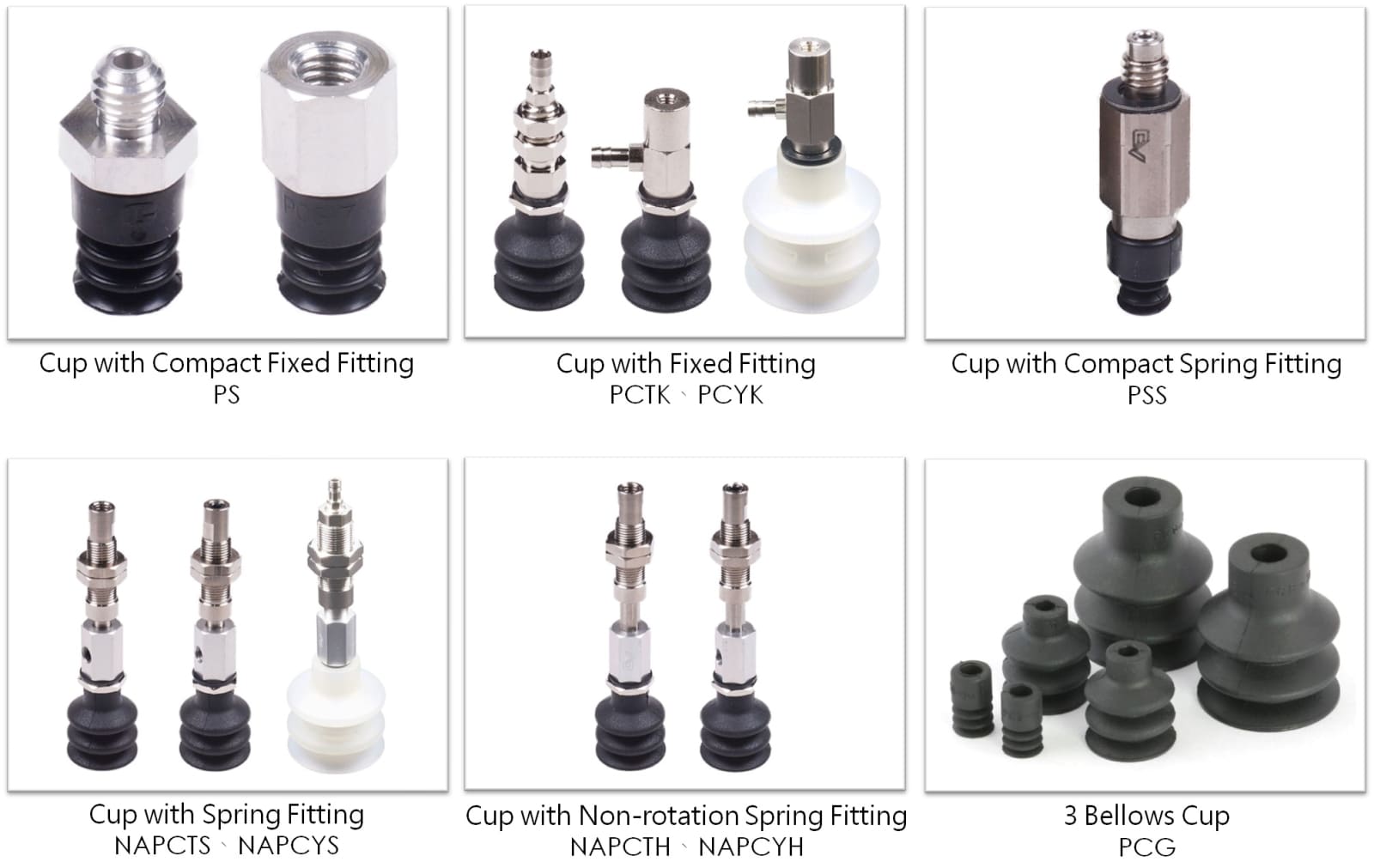

- All Products
- Pneumatic Series
- GENTLE Pneumatic Fittings
- GENTLE Ionizer
- CONVUM Ltd.
- FUJIKURA
- FUJI LATEX Co., Ltd.
- KOGANEI Corporation
- iB series
- Air Cylinders, Hands
- Air Valves
- Air Filters, Regulators, Pressure Gauges
- Flow Rate Sensor Switches, Plachain Ducts, Pressure Switches
- Vacuum Equipment, Pads
- Electric Actuator
- Environmental Hygiene Equipment
- Static Electricity Removal
- Fluororesin Products
- Fixed Discharge Pump
- Medium Control Equipment
- Pulse Blow Series
- NKE Corporation
- TAKEX
- Dispensing Series
- Triple-Bellows Design: Three-stage bellows deliver higher compliance and travel to absorb height errors and assembly tolerances.
- Conforms to Curved/Spherical Surfaces: Thin lip with long bellows stroke seals reliably on inclined, curved, spherical, and irregular shapes to reduce drops.
- Wide Size Coverage: ø5 / 7 / 10 / 15 / 18 / 20 / 30 / 40 / 60 / 90 mm for sizing by contact area, payload, and target cycle time.
- No External Shock Absorber Needed: Built-in travel and cushioning suit EOATs with limited space.
- Material Options: N (NBR) for general, oil-resistant duty; S (Silicone) is softer and minimizes marking for mark-sensitive or cleaner environments.
- Applications: SMT pick-and-place, electronics handling, curved glass/optical lens transfer, spherical or inclined parts gripping, precision assembly, and robotic automation.

Q1: How does PC differ from PB?
A: PC uses triple bellows for greater compliance and followability, excelling on curved and spherical parts; PB is dual-bellows for general uneven/angled surfaces.
Q2: What workpieces are best suited?
A: Inclined parts, spherical objects, curved glass, optical lenses, and other irregular shapes.
Q3: What size options are available?
A: ø5, 7, 10, 15, 18, 20, 30, 40, 60, 90 mm—select by effective contact area, mass, and desired cycle time.
Q4: Do I need extra cushioning?
A: Typically no. The triple-bellows structure provides sufficient travel and damping; add external shock absorption only for large step heights or heavy impacts.
Q5: How should I choose between N and S materials?
A: N (NBR) for general/oil-resistant applications; S (Silicone) is softer and minimizes marking, suitable for mark-sensitive parts and cleaner environments.
Q6: Will the longer stroke slow high-speed handling?
A: Stroke improves compliance; for very short cycle times, verify rebound and vacuum build on your tool and adjust pad size/vacuum settings as needed.
Q7: Is the PC series compatible with existing tooling?
A: Usually yes—check thread/interface, available stroke/space, and pad OD; run a small on-tool trial to confirm.
Q8: Any advice for optics/curved glass handling?
A: Prefer S (Silicone), keep surfaces clean, and consider upsizing for more coverage to reduce micro-slip and marking.
Q9: How do I plan cleaning and replacement intervals?
A: Inspect for lip wear, hardening, or cracks; replace when sealing degrades or drop rate increases. Clean with lint-free wipes and mild agents.
Q10: Can it handle heavier parts or higher accelerations?
A: Yes—ensure total suction force with a safety margin meets mass/acceleration demands; distribute load with multiple pads where needed.





